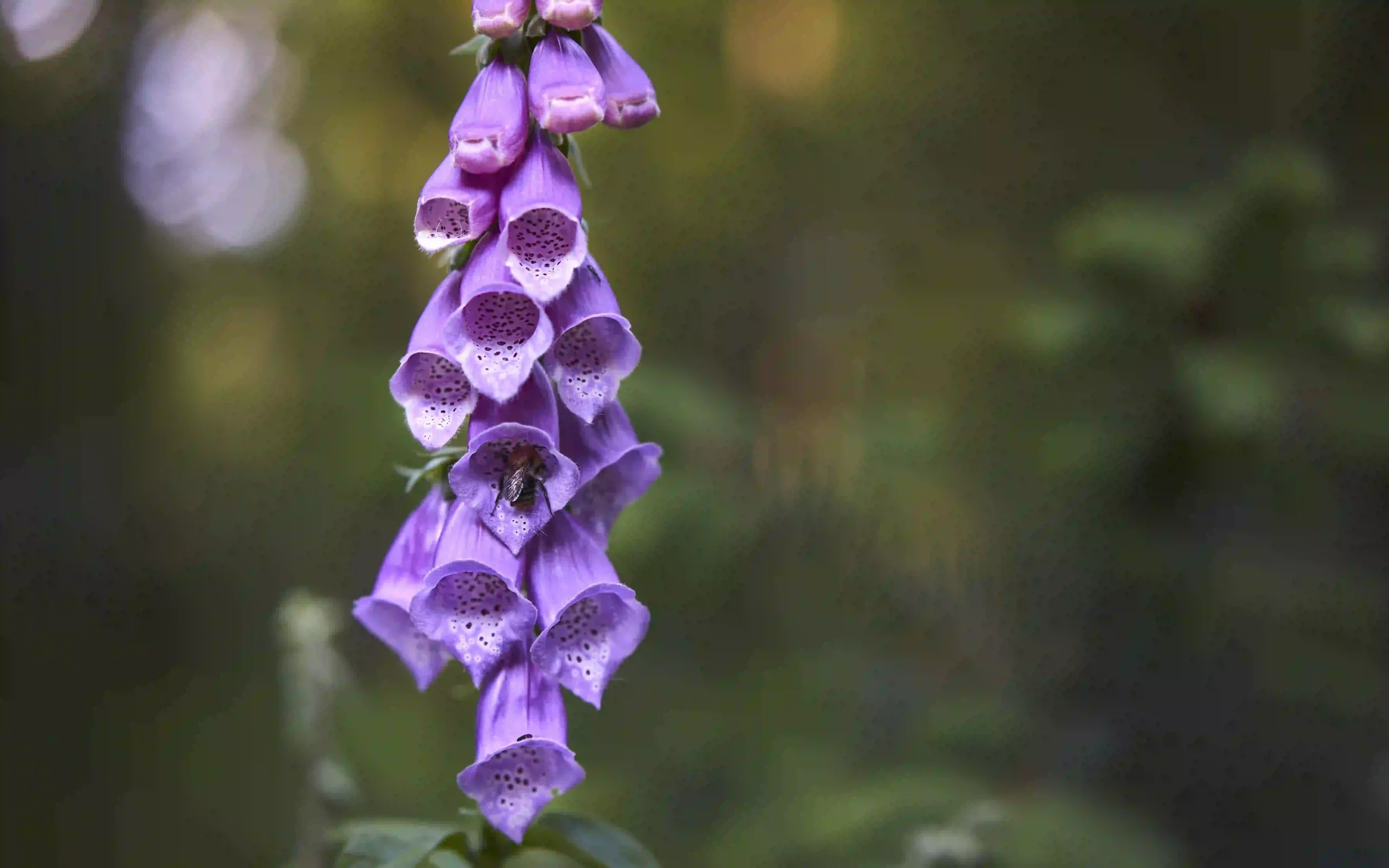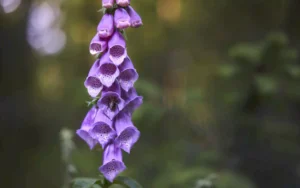Foxglove Gumshoe: A Vital Component of Ecosystem Health
The Foxglove Gumshoe, scientifically known as Austroplatys edentulus, is a remarkable amphibian that plays a crucial role in maintaining ecosystem health. Renowned for its vibrant coloration and unique physical traits, this species is not only captivating to observe but also integral to the ecological balance of its habitat. Found primarily in damp, shaded environments, the Foxglove Gumshoe contributes significantly to biodiversity and acts as a key indicator of environmental quality. Understanding its biological and ecological significance can shed light on the intricate connections that sustain our natural world and highlight the urgent need for conservation efforts.
Understanding the Foxglove Gumshoe
The Foxglove Gumshoe belongs to a family of amphibians often characterized by their moist skin, which plays an essential role in their respiration and hydration. This species is particularly notable for its vibrant coloration, which ranges from bright greens to striking yellows, often patterned with darker spots or stripes. Such coloration not only serves as a warning to potential predators but also plays a role in mating displays, making it a remarkable example of nature’s artistry.
Habitat and Distribution
Foxglove Gumshoes thrive in a variety of habitats, primarily damp, shaded areas such as forests, wetlands, and grasslands. They prefer regions with rich, moist soils that support the growth of various plant species, including the foxglove plant for which they are named. This specific habitat preference is crucial for their survival, as it provides essential resources such as food and shelter.
These amphibians are typically found in regions with moderate climates, as extreme temperatures can be detrimental to their survival. Their distribution often aligns with the availability of suitable habitats, making them sensitive indicators of ecological health. The presence of Foxglove Gumshoes can signal the health of the environment, as they rely on clean water sources and undisturbed habitats for their life cycles.
Ecological Importance of the Foxglove Gumshoe
The Foxglove Gumshoe plays several vital roles in its ecosystem, contributing to the intricate web of life that sustains biodiversity. Its ecological importance can be observed in various ways.
Biodiversity Maintenance
As a part of the food web, it serves as both predator and prey. It feeds on insects, worms, and small invertebrates, helping to regulate their populations and maintain ecological balance. In turn, Foxglove Gumshoes are preyed upon by larger animals such as birds, mammals, and reptiles. This dual role emphasizes the species’ importance in supporting biodiversity within its habitat.
Soil Health
It contributes to soil health through its feeding habits. Consuming various organisms helps to control pest populations and promotes a balanced ecosystem. Additionally, the organic matter produced by these amphibians through their waste contributes nutrients back into the soil, enhancing its fertility and supporting the growth of vegetation.
Pollination and Plant Interactions
While Foxglove Gumshoes are not primary pollinators, their interactions with various plant species indirectly support pollination processes. By moving through their habitats and foraging for food, they facilitate the dispersal of seeds and pollen, contributing to plant reproduction and diversity. The health of plant populations is essential for the overall stability of ecosystems, as plants serve as the foundation for food chains.
Indicators of Environmental Change
Foxglove Gumshoes are sensitive to environmental changes, making them excellent bioindicators of ecosystem health. Their presence or absence in a habitat can signal changes in environmental conditions, such as pollution levels, climate change, or habitat degradation. Conservationists often monitor these amphibians to assess the ecological state of their environments and to implement necessary conservation measures.
Threats Facing the Foxglove Gumshoe
Despite its ecological significance, the Foxglove Gumshoe faces numerous threats that jeopardize its survival. It is essential to comprehend these threats in order to create conservation methods that work.
Habitat Loss and Degradation
Urbanization, agricultural expansion, and industrial development are significant drivers of habitat loss for the Foxglove Gumshoe. As natural habitats are destroyed or fragmented, the available space for these amphibians diminishes, leading to population declines. Habitat degradation, often caused by pollution and invasive species, further exacerbates these challenges, as it disrupts the delicate balance of ecosystems.
Climate Change
Climate change poses a significant threat to the Foxglove and its habitats. Rising temperatures, altered rainfall patterns, and increased frequency of extreme weather events can disrupt breeding cycles, food availability, and overall habitat suitability. Amphibians are particularly sensitive to temperature changes, and as their habitats shift, they may struggle to adapt or find suitable conditions for survival.
Pollution
Pollution from agricultural runoff, industrial discharges, and urban waste can have devastating effects on it and its ecosystem. Contaminants in water bodies can disrupt the amphibian’s reproductive processes, reduce food availability, and lead to increased mortality rates. Protecting water quality is essential for the survival of this species and the broader ecosystem.
Invasive Species
Invasive species pose a significant threat to it by outcompeting native species for resources. These invaders can alter habitats, disrupt food chains, and introduce new diseases, further endangering the survival of native amphibians. Effective management strategies are necessary to control invasive populations and protect the native biodiversity that supports the Foxglove.
Conservation Efforts
Recognizing the ecological importance of the Foxglove Gumshoe, various conservation initiatives are underway to protect this species and its habitats. These efforts aim to address the threats facing the Foxglove and ensure its long-term survival.
Habitat Restoration
Efforts to restore and rehabilitate natural habitats are crucial for the survival of it. This includes reforestation projects, wetland restoration, and the removal of invasive species. By creating healthy, interconnected ecosystems, conservationists can support the growth and reproduction of this amphibian species.
Protected Areas
Establishing protected areas is a critical step in safeguarding the habitats of the Foxglove. By designating specific regions as conservation zones, these efforts aim to minimize human impact, preserve biodiversity, and ensure the continued existence of vital ecosystems. Collaboration between governmental bodies, non-profit organizations, and local communities is essential for effective protected area management.
Public Awareness and Education
Raising public awareness about the importance of the Foxglove Gumshoe and the threats it faces is key to conservation success. Educational programs targeting local communities, schools, and conservation groups can foster a sense of responsibility and encourage action. By engaging the public in conservation initiatives, individuals can play an active role in protecting it and its habitat.
Research and Monitoring
Ongoing research and monitoring are essential for understanding the biology and ecology of the Foxglove. Data collected through scientific studies can inform conservation strategies, help identify critical habitats, and assess the effectiveness of conservation initiatives. Engaging citizen scientists in monitoring efforts can also enhance data collection and raise awareness about local biodiversity.
How You Can Help
Individuals can contribute to the conservation of the Foxglove Gumshoe and its habitats through various actions. Here are some ways to get involved.
Support Local Conservation Organizations
Contributing to local conservation organizations that focus on amphibian protection and habitat restoration is a meaningful way to make an impact. Donations, volunteering, or participating in local events can help support initiatives aimed at preserving the Foxglove and its ecosystem.
Promote Sustainable Practices
Adopting sustainable practices in daily life can reduce environmental impact and support the health of local ecosystems. Simple actions such as reducing plastic use, minimizing chemical fertilizers, and participating in local clean-up events can contribute to a healthier habitat for the Foxglove Gumshoe and other wildlife.
Advocate for Environmental Protection
Engaging in advocacy for environmental protection policies can help create systemic change. Writing letters to local representatives, participating in community meetings, and supporting legislation aimed at wildlife protection are powerful ways to influence policy decisions that affect Foxglove and its habitats.
Educate Others
Sharing knowledge about it and its ecological importance can inspire others to take action. Utilize social media platforms, host educational events, or create informational materials to raise awareness within your community. By fostering a sense of shared responsibility for wildlife conservation, collective efforts can lead to meaningful change.
Conclusion
The Foxglove Gumshoe is not just a fascinating amphibian it is a vital component of ecosystem health. Its roles in maintaining biodiversity, supporting soil health, facilitating plant interactions, and serving as an indicator of environmental change highlight its ecological significance. However, the threats it faces, including habitat loss, climate change, pollution, and invasive species, necessitate concerted conservation efforts. By understanding and addressing these challenges, we can ensure the survival of the Foxglove Gumshoe and the intricate ecosystems it inhabits. Through individual actions, community engagement, and collaboration with conservation organizations, we can collectively contribute to the preservation of this remarkable species and the natural world that sustains us all.














Post Comment